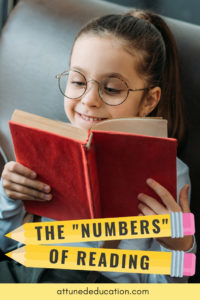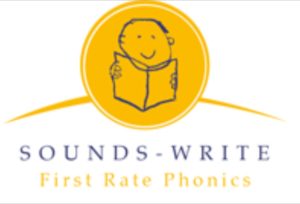The ‘numbers’ of Reading
April 3, 2017This image was kindly provided by ‘mom loves best’ you can check out their website here
Recent estimates suggest that while there may be less than 1% of the adult population who are completely illiterate there are approximately 5.1 million people – about 16% who are what would be described as functionally illiterate with a reading age below that of an 11 year old. That means that while they may be able to read some words in text about familiar topics, unknown texts or forms would present huge difficulties – clearly this has an impact on their ability to find jobs, claim benefits and a huge number of other everyday tasks, including of course helping their children to read or supporting them with homework, or vene reading the letters sent home by school.
This affects about 1 in 5 adults. This ratio is higher among certain groups for example those in prison.
When it comes to reading among children there’s a few statistics below that don’t make for happy ‘reading’ – you can see them for yourself at https://readingagency.org.uk/about/impact/002-reading-facts-1/
- Statistics from 2014 show that one in five children in England cannot read well by the age of 11.1
- Research conducted in 2012 found that 17% of 15 year-olds in England do not have a minimum level of proficiency in literacy.2
- Analysis conducted in 2013 found that in England 16 to 24 year-olds have lower levels of literacy than young people in 21 out of 24 countries in the OECD. Literacy levels are higher in Japan, Estonia, Czech Republic and the USA.3
- England is the only country where 16-24 year olds have lower literacy and numeracy skills than 55-65 year-olds, out of 24 OECD countries.4
References
- [DfE (2015)Reading: the next stepsp.13]↩
2. [DfE (2013) Achievement of 15-Year-Olds in England: PISA 2012 National Report, p.66]↩ - [OECD (2013)Skills Outlook: First results from the survey of adult skillsp.72]↩
4. [OECD (2013) England & Northern Ireland (UK) – Country Note -Survey of Adult Skills first results p.4]↩
Yet in the UK our children start formal schooling earlier than in most other European countries (Cyprus and Malta being the only other countries in Europe where children start school at age 5). In some countries e.g. Sweden and Finland they don’t start till they are 7 years old. So it would be reasonable to expect good levels of literacy as children are at school longer but in fact Latvia Estonia and Belarus have the highest literacy levels in Europe http://www.mapsofworld.com/europe/thematic/countries-with-literacy-rate.html
If you want to have a look at literacy levels across the world there are loads of statistics here
So why do some children struggle to learn to read. One reason may be that the child themselves has a particular problem – I’m not going to address what those might be in this article. But the other reason might lie in the way we teach reading.
For a number of years schools used a whole language approach – where whole words were taught but research has now shown that actually we don’t ‘read’ whole words, effective readers de-code words but they do it with such speed that although it may look as if they are focussing on a whole word, actually their eyes scan forward and backward through the word.
There has been much research to show that phonics is the most effective method to teach reading.
Sounds-write is a linguistic phonic approach grounded thoroughly in research and explicitly teaches children the following
The 3 skills they need for effective reading,
Blending – running individual sounds together to form a word – ‘c’ ‘a’ ‘t’ – ‘cat’
Segmenting – pulling apart the individual sounds in a word – when children can do this they will be able to successfully spell and write the word ‘cat’ – ‘c’ ‘a’ ‘t’
Phoneme manipulation – the ability to pull sounds in and out of words split without the ‘p’ = ‘slit’
The 4 concepts needed for effective reading
- Letters are symbols of sounds
- Sounds may be spelled by 1,2,3 or 4 letters
- The same sound may be spelled in different ways ‘show’ ‘go’ toe’ ‘bone’ or ‘dough’ all have a similar sound but it is spelt in different ways
- The same letter(s) may represent different sounds – as in cat and city or go and got
They also need to understand what we refer to as code knowledge – we have 144 sounds in our language but only 26 letters in the alphabet so developing readers need to taught the ‘code’ – the initial code where most sounds are represented by a single letter as in ‘dog’ but also the extended code where several letters may represent a single sound like ‘ough’ in dough and the different ways of spelling common sounds – ‘n’ for example
- no
- knee
- running
- gnarl
- pneumonia
There aren’t silent letters (no letters make any sounds it’s us the humans who do that) and there are no magic letters, even rules will usually have exceptions so the more helpful approach is simply to think of it as it is – listed simply in the concepts above.
One of the things I particularly like about Sounds-write is that it explicitly teaches children how to handle polysyllabic words. Children who are taught using this method can confidently approach any word they may come across.
Individual children may for a variety of reasons struggle with particular aspects of learning to read but success is much more likely when teachers who teach them use a knowledge based phonic programme with proven efficacy which they have been trained to use and which they feel confident teaching.
Teachers and school staff, if you are teaching phonics and haven’t been trained – get in touch.
Parents, if your child is struggling with learning to read, you feel that you don’t understand phonics or you are worried about the approach used by your child’s school get in touch.
Problems with reading can impact every other aspect of the curriculum and have a detrimental impact on the child’s view of school, their own learning and their self-esteem.
Click on the link below for a PDF that children can colour in – as it’s probably holidays now you can talk about books and reading while they do then enjoy a story together!




